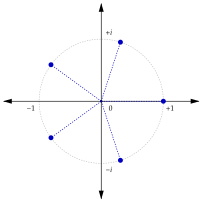Generating set of a group

Imagine you have a group of toys, like blocks or Legos. Each toy can be combined or put together in different ways, but there are certain toys that if you have them, you can get all the other toys by just combining them in different ways.
The generating set of a group is like having those certain toys that can get you all the other toys. It's a set of elements in the group (which are like the toys) that can be combined in different ways to get every other element in the group.
For example, imagine you have a group of numbers, like {1, 2, 3, 4, 5}. If you have the number 2 and you know you can add or subtract it to other numbers in the group, you can get all the other numbers in the group:
- 2 + 1 = 3
- 2 + 2 = 4
- 2 + 3 = 5
- 2 - 1 = 1
- 2 - 2 = 0
- 2 - 3 = -1
So in this case, the generating set of the group is just the number 2, because you can get all the other numbers by just combining it with + and - operations.
That's the basic idea of what the generating set of a group is: it's a set of "toys" (elements) that can be combined in different ways to get every other "toy" (element) in the group.
The generating set of a group is like having those certain toys that can get you all the other toys. It's a set of elements in the group (which are like the toys) that can be combined in different ways to get every other element in the group.
For example, imagine you have a group of numbers, like {1, 2, 3, 4, 5}. If you have the number 2 and you know you can add or subtract it to other numbers in the group, you can get all the other numbers in the group:
- 2 + 1 = 3
- 2 + 2 = 4
- 2 + 3 = 5
- 2 - 1 = 1
- 2 - 2 = 0
- 2 - 3 = -1
So in this case, the generating set of the group is just the number 2, because you can get all the other numbers by just combining it with + and - operations.
That's the basic idea of what the generating set of a group is: it's a set of "toys" (elements) that can be combined in different ways to get every other "toy" (element) in the group.
Related topics others have asked about:
